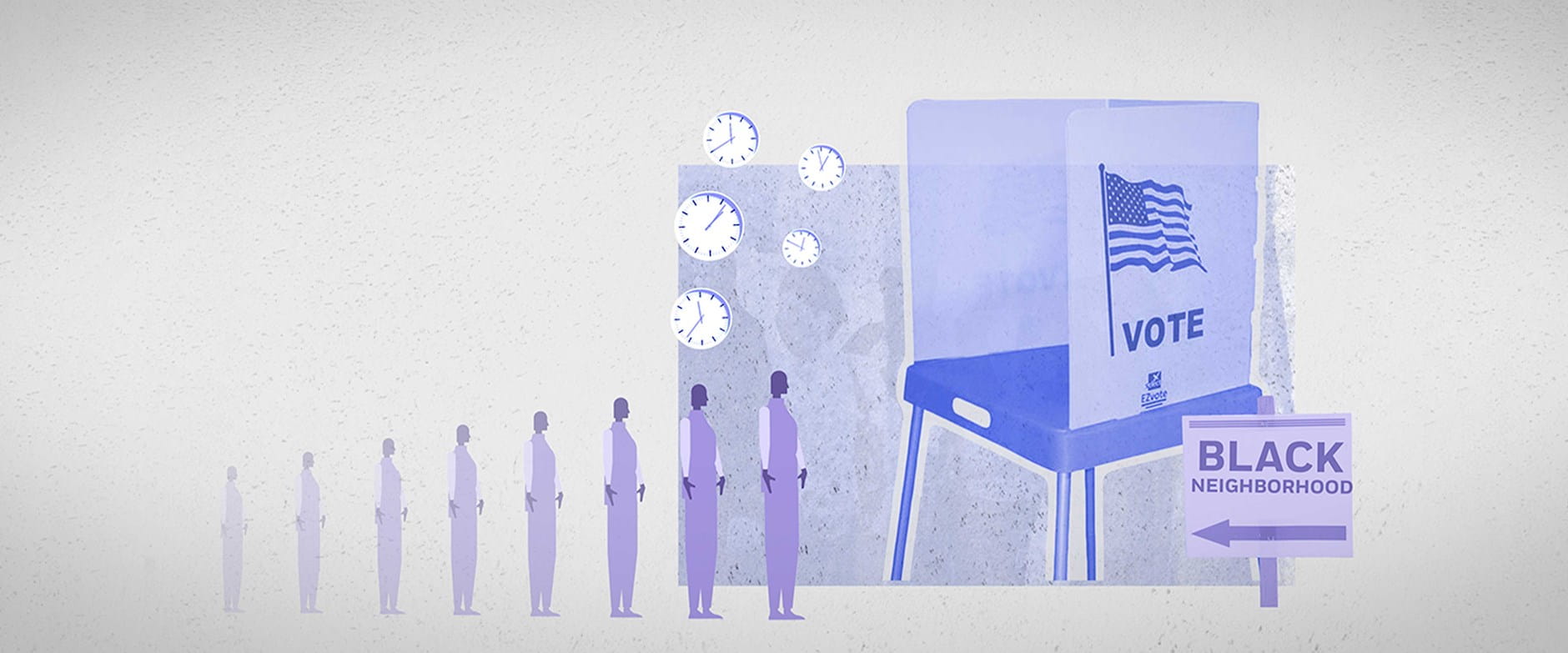Narrator: Free and fair elections may be the cornerstone of democracy, but if you turn on the news, it may seem like this cornerstone is missing. There are many voters that claim their right to a free and fair election is being systematically suppressed. This all being done through long wait times and ID laws that suppress their vote. A deeper statistical dive from Chicago Booth’s Devin Pope and his coauthors seeks to uncover what is really happening on Election Day.
Devin Pope: So my coauthors—Keith Chen, Kareem Haggag, and Ryne Rohla—and I, we were interested in how widespread these long wait lines really are. There are lots of anecdotes, but is it really widespread? Or do we just see the really bad examples when it happens to get bad?
Narrator: The researchers were able to analyze a data set that contains millions of cell-phone users. Every few minutes, the cell phone would send out a ping marking the users’ location.
Devin Pope: And so what we’re able to do is on Election Day in 2016, we’re able to track people as they leave their home and they go to their polling location, and we can see how long they remain at that polling location before they exit again. And we consider that time that they spent at the polling location their wait time, or how long it took to vote. And so we’re able to document across the entire US, across tens of thousands of different polling locations, what are the wait times that exist for most Americans?
Narrator: The data produced some pretty interesting results.
Devin Pope: We find that a typical time it takes to vote is between 15 and 20 minutes, but there’s a lot of geographic variation in that number. Some states have much longer wait times than in other states.
Narrator: But what about areas that are predominantly Black? Did they have longer wait times?
Devin Pope: Majority Black areas have a lot longer wait times than majority white areas. In fact, if you move from an entirely white neighborhood to an entirely Black neighborhood, the wait times increased by about 30 percent. Or you’re about 75 percent more likely to wait in a line that’s more than 30 minutes long. So these are large differences that are persistent, and we see across states in the US, [and] that are, of course, discouraging, but being able to document them and show where they are the largest, I think, is a very important step in the right direction in terms of trying to solve some of these discrepancies.
Narrator: The researchers were not able to answer why with the data, but they were able to shed some light on the mechanism.
Devin Pope: First of all, we’re able to rule out some things that people have suggested. So for example, one suggestion has been that a lot of Black working-class neighborhoods all show up to vote at the same time, right before or right after work. Whereas, maybe in white neighborhoods, there’s more flexibility with work schedules, and so the voting is smoothed out over time, and that’s why the wait times are shorter. We actually don’t see very much evidence of that. While there is a little bit more bunching in the polls, at the polling locations around before and after work in Black areas, it’s not driving most of the results that we find. We also look at other mechanisms. So for example, we look at states where they have stricter voting ID laws, or they maybe have other hoops that you have to pass through when you show up to vote. And we don’t see that that is causing a lot of the variation that we see.
We also surprisingly don’t find evidence that this is primarily occurring in places of a particular political affiliation. So you don’t see more discrepancies between Black and white wait times in Republican states versus Democrat states. They’re actually pretty similar. It suggests that this discrepancy that we see in voting wait times is quite widespread and is probably not being driven by one particular phenomenon or one particular political party. But rather there’s a consistent lack of funding or underpreparedness in Black neighborhoods when it comes to poll workers, or voting machines, or whatever it is that’s causing them to not be able to move [voters] through these queues as quickly.
Narrator: The research can’t speak to the harm being caused by these long wait times, but other research has suggested longer wait times can deter voters from wanting to vote, or can cause voters to abandon the polling center before voting. The data does not give the answer, but it does suggest something needs to be done to create equal voting for all.
